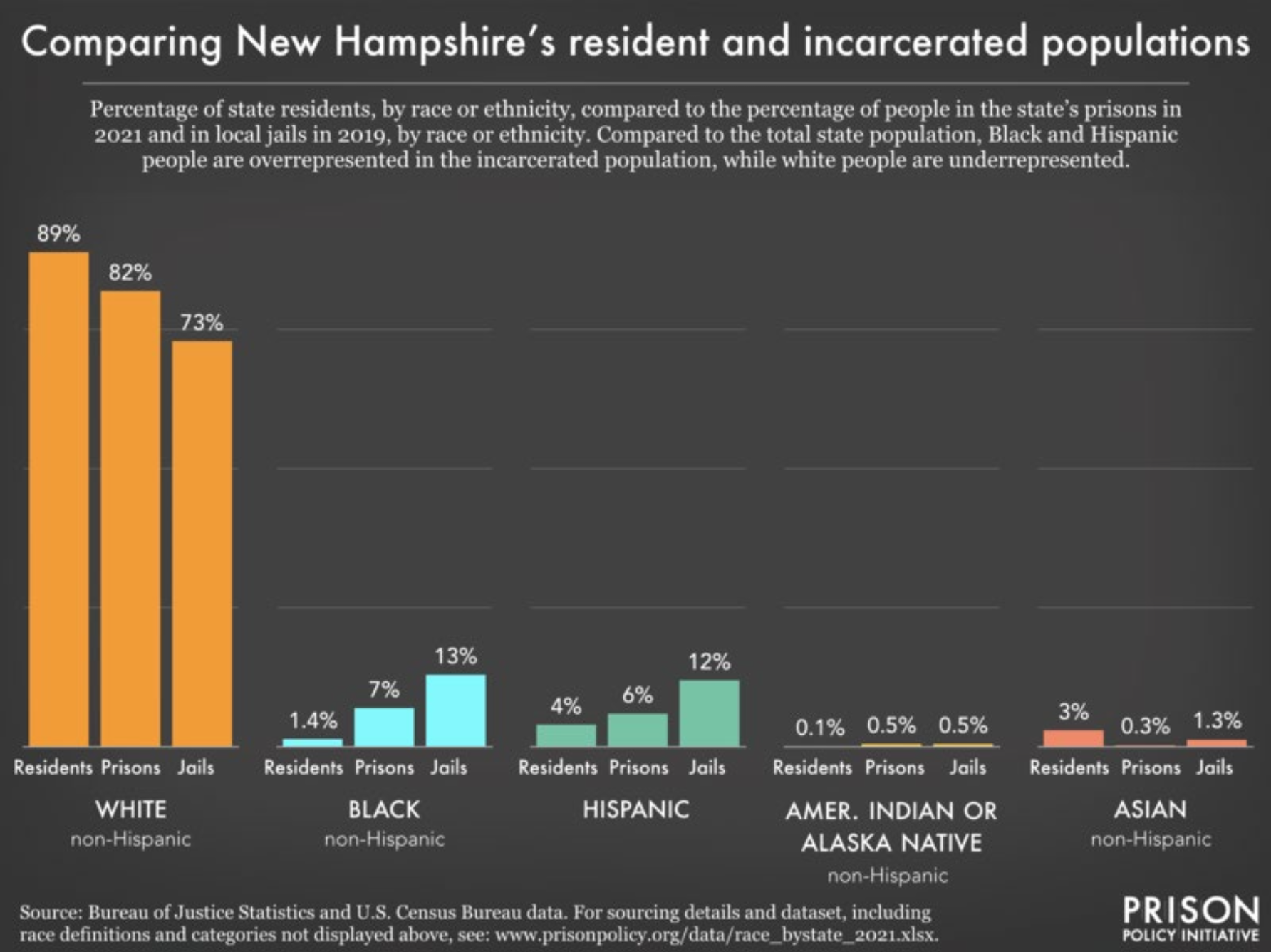
A new brief from the New Hampshire Center for Justice and Equity summarizes the data – and data gaps – related to New Hampshire’s incarceration rates
Download the NHCJE Incarceration Demographics Brief
By NH Center for Justice and Equity
It is well-documented that incarceration rates across the United States are high, with racial and ethnic groups disproportionately represented among incarcerated populations. With discussions surrounding these disparities gaining momentum in recent years, this newly released brief from the New Hampshire Center for Justice and Equity answers questions about national incarceration trends and reviews the distribution of incarcerated individuals across New Hampshire. This work also sheds light on the significant gaps in data, which limit what is known about the population involved in New Hampshire’sjustice system.

Understanding New Hampshire’s Incarceration Landscape
Despite its small size, New Hampshire has one federal prison, three state prisons, and ten county jails – one in each Granite State county. The sole Federal Correctional Institution (FCI) in New Hampshire is a medium security facility for male offenders, located in Berlin. The state prisons are distributed between Berlin – with the Northern New Hampshire Correctional Facility, and Concord – with the New Hampshire State Prison for Men and the New Hampshire Correctional Facility for Women.
Prison population reports reveal that the state prisons alone house nearly as many individuals as the federal prison and county facilities combined. However, reports from the Federal Bureau of Prisons, the New Hampshire Department of Corrections (NH DOC) annual reports, and county-level reports do not provide detailed demographic breakdowns of the incarcerated population. When delving into the available data, it is unclear what proportion of incarcerated people in each facility in the state are from communities of color.
Disparities in Demographics
Despite these limitations, an analysis from the Prison Policy Initiative offers some insights into New Hampshire’s incarcerated population. In New Hampshire’s state prisons, 7% of the population is Black, while less than 2% of the overall population in NH is Black. Similarly, 6% of the state prison population is Hispanic, while the Hispanic population overall in NH is 4%.
The disparities become even more pronounced when examining the county jails. Black and Hispanic individuals collectively account for 25% of the overall jail population, yet despite making up less than 6% of New Hampshire’s resident population.

NH incarcerated populations and overall population, by race, 2021 and 2019, from the Prison Policy Initiative.
New Hampshire Mirrors National Incarceration Trends
The United States incarcerates more people than any other nation, and rates of incarceration are disproportionately high among people of color – while 14% of the overall US population is Black, 35% of incarcerated individuals are Black, according to 2024 data.
What is reported in this brief indicates that New Hampshire incarcerates people of color at disproportionately high rates compared to White populations, mirroring national trends. Understanding the systemic changes necessary to address this long-standing issue is important. However, the lack of race-specific data collection in arrests, booking, sentencing, and jail population limits further analysis.
The Path Forward: Improving Data Collection
More work is needed to improve data collection to permit better reporting and investigation of the underlying issues related to disparities in incarceration. The lack of data on facility-level demographics across New Hampshire limits our understanding of justice system disparities in the state. Detailed demographic information on incarcerated populations is essential for policymakers, researchers, and advocates to gain a clearer picture of the current incarceration trends and effectively work toward a more equitable justice system.
Discover the statistics and learn more about New Hampshire’s incarcerated population.





